EMOS M0012A Handleiding
EMOS
Niet gecategoriseerd
M0012A
Bekijk gratis de handleiding van EMOS M0012A (32 pagina’s), behorend tot de categorie Niet gecategoriseerd. Deze gids werd als nuttig beoordeeld door 320 mensen en kreeg gemiddeld 4.6 sterren uit 160.5 reviews. Heb je een vraag over EMOS M0012A of wil je andere gebruikers van dit product iets vragen? Stel een vraag
Pagina 1/32

2201014000_31-M0012A_00_01 90 × 220 mm
www.emos.eu
M0012A | VT-320
GB Voltage Tester
CZ Zkoušečka napětí
SK Skúšačka napätia
PL Tester napięcia
HU Feszültségmérő
SI Preizkuševalec napetosti
RS|HR|BA|ME Ispitivač napona
DE Spannungsprüfer
UA Тестер напруги
RO Tester de tensiune
LT Įtampos testeris
LV Sprieguma testeris
EE Pingetester
BG Тестер за напрежение

2
GB | Voltage Tester
Voltage tester VT-320 is designed for two-pole measurement of DC and AC voltage
between 12 and 690 V with a frequency of 0–60 Hz, for identifying the phase conductor,
the phase sequence in a three-phase system with a neutral conductor, to determine the
polarity of DC voltage and test continuity.
The tester meets the requirements of standard EN 61243-3:2015.
The tester can be used for making measurements in electrical wiring and devices falling
within overvoltage category CAT III 690 V.
Category CAT III is designed for measuring circuits powered by a xed output power
supply, such as relays, sockets, switchboards, power supplies, short branching circuits
and lighting systems in large buildings.
Do not use for higher CAT categories.
International Electrical Symbols
alternating current (AC)
direct current (DC)
alternating or direct current
earthing
double insulation
warning, risk of danger. Read the manual in all cases where this symbol is used!
risk of injury by electric current
declaration of conformity (CE)
Specications
Pollution degree: 2
Category and measurement range: CAT III 12–690 V AC/DC
Operating temperature: -10 °C to 55 °C
Storage temperature: -20 °C to 55 °C
Power supply: 1× 9 V battery, type 6F22
Enclosure: IP54
Dimensions 27 × 50 × 200 mm
Weight: 157 g (battery included)
Description of Tester
(see g. 1)
1 – Mobile measuring tip
2 – Mobile measuring tip barrier
3 – Slider
4 – LEDs of voltage volume and +/-
polarity
5 – L2 measuring tip
6 – L3 LED
7 – Measuring tip barrier
8 – R LED
9 – R button
R
690
400400
230
120
50
24
R
L1
L2
L3
12
+
1
2
34
10
11
5
6
7
12
9
8
1
2

3
10 – Metal protrusion
11 – Battery compartment
12 – Tester lug
When measuring with the mobile measuring tip, you must move the slider down to
expose the metal tip; see gure 2.
Verifying Tester Functionality
Verify the tester’s functionality before use.
Verify using power sources with known parameters.
• Short-circuit the measuring tips and press the R button; a buzzer will sound and
the R LED will light up.
• Insert tip L2 into the phase hole of a 230 V AC power socket and touch the metal pro-
trusion on the back of the tester. The red L3 LED will light up and a buzzer will sound.
• Connect the tester to both holes in a socket (230 V AC); +/-, R and L3 LEDs will light
up, the column of LEDs will light up all the way up to 230 V and a buzzer will sound.
AC Voltage Value Indication
Place both measuring tips onto the measured object (circuit).
The voltage value will be displayed on the LED scale and the +/- , R and L3 LEDs will
light up.
You will hear a buzzer (at over 50 V) and an LED will be lit up.
Note: If the battery is not inserted, the buzzer will not be functional.
DC Voltage Value Indication
Place both measuring tips onto the measured object (circuit).
The voltage value will appear on the LED scale.
You will hear a buzzer (at over 50 V) and an LED will be lit up.
If tip L2 is on the positive pole, the + LED will be lit up.
If tip L2 is on the negative pole, the + LED will be lit up.
Note: If the battery is not inserted, the buzzer will not be functional.
Identifying the Phase Conductor
Place the mobile measuring tip or L2 tip onto the phase conductor.
Place a nger on the metal protrusion on the back of the tester.
If phase voltage is higher than 50 V, you will hear a buzzer and the L3 LED will light up.
Note:
If the battery is not inserted, phase detection will not be functional.
Before measuring, run a test on a dierent, known phase conductor.
After measuring, test the circuit again using both tips.
The measurement results may be negatively aected by electrostatic elds, level of insu-
lation, etc.
Determining Phase Sequence
Place a nger on the metal protrusion on the back of the tester.
Place the xed measuring tip L2 onto the central terminal of the three-phase system.
Place the mobile measuring tip onto the left terminal.
If the two phases are in the correct order, diodes 12 to 230 V will be lit up and diode
L3 with turn o.
If the two phases are not in the correct order, diode L3 will remain lit.
Note:
Phase sequence detection is functional at voltages higher than 110 V AC.
Before measuring, run a test measurement on a dierent, known three-phase source.
When measuring, make sure the tips are in solid contact with the measured source.
Measuring Circuit Continuity
Place both tips of the tester onto the measured object.
Press the R button.
If resistance of the measured circuit is <400 kΩ, the tester will evaluate that as circuit
continuity, a buzzer will sound and the R LED will light up.
If resistance in the measured circuit is >400 kΩ but lower than 1 MΩ, the R LED will light
up, but the buzzer will not activate.
At resistance between >1 MΩ and 10 MΩ, the R LED will light up slightly, and the buzzer
will not activate.
At resistance of >10 MΩ, the tester will not turn on at all!
Battery Replacement
Replace the battery in the tester if the buzzer does not activate or the LED does not light
up when you short-circuit the two tips together.
Disconnect the tester from all voltage sources.
Remove the battery cover screws using a suitable screwdriver and remove the cover.
Remove the drained battery.
Insert a new 9 V alkaline battery, type 6F22, and make sure to observe correct polarity
of contacts; do not use a rechargeable battery.
Replace the cover and screw it back on.
WARNING
• Do not use the device if the leads or cover are damaged.
• The device may only be operated by a responsible and trained person.
• Do not test voltage through contact if you do not know the exact voltage in the
circuit!
• ATTENTION! The measurement time must not be longer than 10 seconds, especially
in higher voltages.
• The maximum measurement time must not exceed 30 seconds or the device will
become damaged.
• A pause of 240 seconds must follow after each measurement.
Product specificaties
| Merk: | EMOS |
| Categorie: | Niet gecategoriseerd |
| Model: | M0012A |
Heb je hulp nodig?
Als je hulp nodig hebt met EMOS M0012A stel dan hieronder een vraag en andere gebruikers zullen je antwoorden
Handleiding Niet gecategoriseerd EMOS
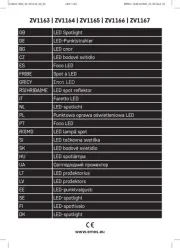
19 Augustus 2025
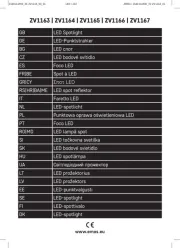
18 Augustus 2025
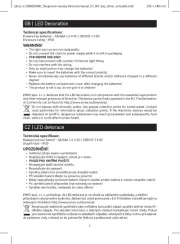
15 Augustus 2025
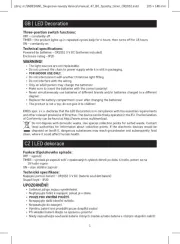
14 Augustus 2025
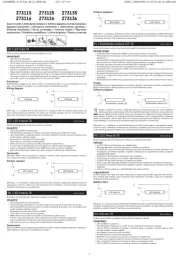
14 Augustus 2025
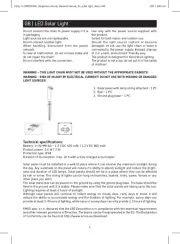
14 Augustus 2025
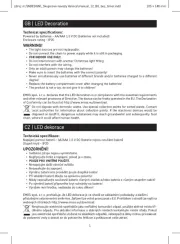
14 Augustus 2025
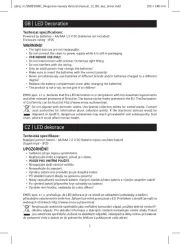
14 Augustus 2025
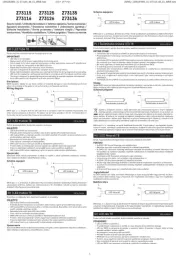
14 Augustus 2025
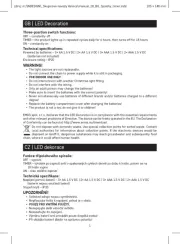
14 Augustus 2025
Handleiding Niet gecategoriseerd
- DB Technologies
- Hama
- Valeton
- MID49
- Seymour Duncan
- Vogel's
- Hudora
- Adobe
- Shelly
- TeachLogic
- Rugged Geek
- Raveland
- Vivax
- Martin Yale
- Trace Elliot
Nieuwste handleidingen voor Niet gecategoriseerd

14 September 2025

13 September 2025

13 September 2025

13 September 2025

13 September 2025

13 September 2025

13 September 2025

13 September 2025

13 September 2025

13 September 2025